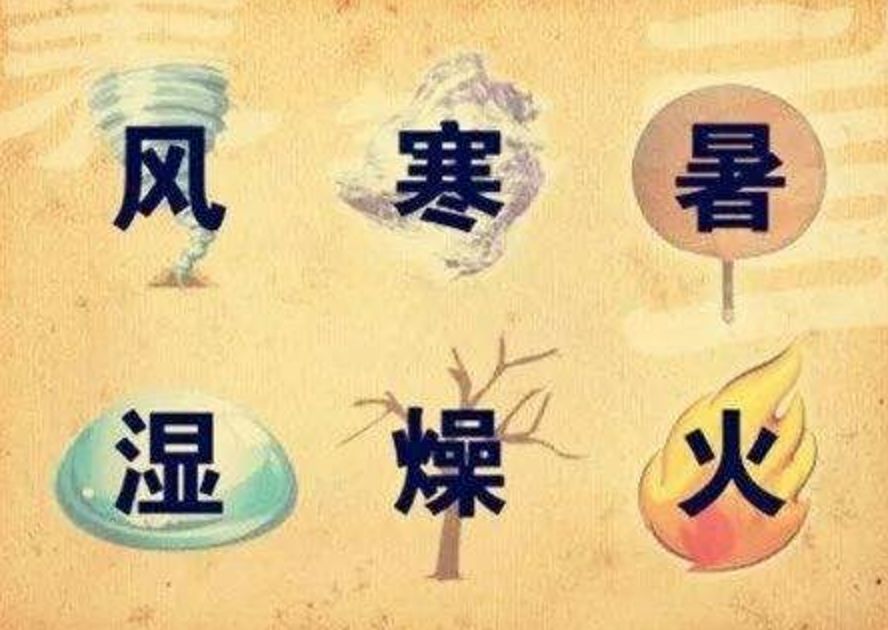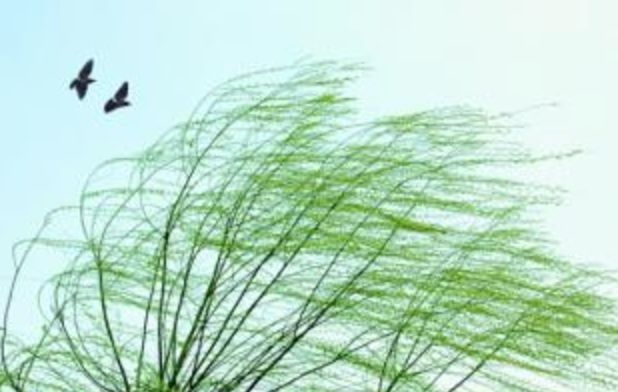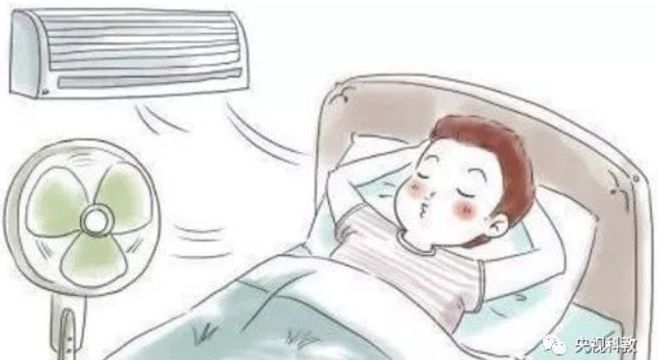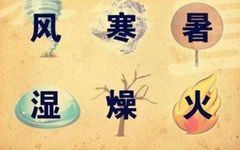

 In the previous article, we mentioned that, from a TCM perspective, the key to disease onset lies in insufficient Zheng Qi (正气, vital energy) and the invasion of Xie Qi (邪气, pathogenic energy). We introduced what Zheng Qi is and how to enhance it. In this article, we will discuss what Xie Qi is and what the Six Excesses (六淫, liu yin) in TCM are, as well as how to prevent them.
In the previous article, we mentioned that, from a TCM perspective, the key to disease onset lies in insufficient Zheng Qi (正气, vital energy) and the invasion of Xie Qi (邪气, pathogenic energy). We introduced what Zheng Qi is and how to enhance it. In this article, we will discuss what Xie Qi is and what the Six Excesses (六淫, liu yin) in TCM are, as well as how to prevent them. Author: Dr. David
Author: Dr. David
The “Huangdi Neijing” (黄帝内经, Yellow Emperor’s Inner Canon) provides a good explanation of Xie Qi: “When in its proper place, it is Zheng; when out of place, it is Xie.” The “Chinese Medical Encyclopedia” defines Xie Qi as: in contrast to Zheng Qi, it refers to various pathogenic factors and their pathological damage. The “Huangdi Neijing” mentions that “wherever Xie Qi gathers, the Qi must be deficient”, meaning that when Zheng Qi is insufficient, Xie Qi can easily invade, leading to an imbalance of Yin and Yang in the body, which can result in disease. The causes of disease are often divided into three categories: external causes, internal causes, and mixed causes. Among these, external causes include the Six Excesses and epidemic diseases. Epidemic diseases refer to highly infectious diseases that can spread rapidly and even lead to death, similar to the current COVID-19 (新型冠状病毒肺炎, xinxing guanzhuang bingdu feiyan). The Six Excesses refer to the six external pathogenic factors: Wind (风, feng), Cold (寒, han), Heat (暑, shu), Dampness (湿, shi), Dryness (燥, zao), and Fire (火, huo). These factors can be abnormal climatic changes or normal climatic conditions, and they are the main causes of external diseases in the human body. Below, we will focus on introducing the Six Excesses and their characteristics.

Characteristics and Pathogenic Features
The Six Excesses each have different characteristics and pathogenic features. Based on their Yin-Yang properties, they can be divided into two categories: Yin pathogens and Yang pathogens. Among them, Wind, Heat, Dryness, and Fire are Yang pathogens, while Cold and Dampness are Yin pathogens.
Wind is the primary pathogenic factor in spring but can occur in all seasons. It is often referred to as the “leader of all diseases” and is the foremost among the Six Excesses. The characteristics and pathogenic features of Wind include the following: First, Wind is a Yang pathogen, characterized by its ability to disperse and invade the Yang areas of the body, such as the surface, neck, and lower back. After causing disease, it can easily open the pores of the skin, leading to symptoms such as nasal congestion, runny nose, stiff neck, aversion to wind, and sweating. Second, Wind is characterized by its mobility; Wind pathogens often present with fluctuating symptoms, such as wandering pain, tremors in the limbs, facial drooping, convulsions, and dizziness. Third, Wind is variable; Wind pathogens can cause rapid onset and quick resolution of diseases, such as urticaria. Finally, Wind often acts in conjunction with other pathogens, such as in cases of Wind-Damp arthritis, Wind-Cold flu, and Wind-Heat flu.

Cold is a Yin pathogen and is the primary pathogenic factor in winter, thus it is commonly seen in this season. Its characteristics and pathogenic features include: it easily injures Yang Qi. Yang Qi warms the body, and if it is insufficient, symptoms such as cold extremities, aversion to cold, and clear, frequent urination may occur. Cold is also characterized by stagnation, which can lead to pain; Cold pathogens often invade the joints, causing stagnation of Qi and blood, leading to pain due to obstruction. Cold also constricts the blood vessels, resulting in stiffness and limited movement.

Heat pathogenic factors are most prevalent in summer and have distinct seasonality. Its characteristics and pathogenic features include: Heat is a Yang pathogen, characterized by its hot nature, which can lead to high fever, thirst, and profuse sweating. Heat tends to consume body fluids and Qi, often leading to symptoms such as thirst, dry lips and tongue, fatigue, and weakness in the limbs. Heat is often accompanied by Dampness; in summer, the hot climate is usually accompanied by humidity, leading to symptoms of Dampness obstruction, such as thirst without desire to drink, heaviness, and loose stools.

Dampness is most commonly seen in the late summer (i.e., midsummer) but can also occur in other seasons. Its characteristics and pathogenic features include: Dampness is a Yin pathogen that easily obstructs the movement of Qi. When Qi cannot circulate properly, symptoms such as abdominal fullness and distension may occur. Dampness is heavy and turbid, often leading to symptoms such as heaviness in the body, and foul or unclear secretions, frequently affecting the lower body, resulting in symptoms like heaviness in the lower limbs, leukorrhea, and diarrhea. Dampness is sticky and difficult to eliminate; once it invades the body, it can linger for a long time, often presenting as sticky stools and prolonged illness that is hard to recover from.

Dryness is most commonly seen in autumn. Its characteristics and pathogenic features include: Dryness is characterized by its dry nature, which can injure body fluids. Due to its dry nature, Dryness can consume the body’s fluids, leading to symptoms such as dry cough, dry lips and tongue, dry eyes, constipation, and cracked skin. Dryness can also harm the lungs; in TCM, the lungs are delicate organs that prefer moisture and dislike dryness, so Dryness can easily damage lung fluids, affecting their function of dispersing and descending Qi, often leading to symptoms such as dry cough with little phlegm, dry nose and mouth, and dry skin.

Fire is the extreme of heat. Its characteristics and pathogenic features include: Fire is scorching and tends to rise. Therefore, it often presents with high fever, flushed face, red eyes, thirst, and a rapid pulse, indicating a heat syndrome. Fire can disturb the mind, leading to symptoms such as irritability, insomnia, and agitation. Fire often affects the upper parts of the body, such as the eyes, mouth, and nose, leading to symptoms like mouth sores and red, swollen eyes. Fire can also generate Wind and move blood; it often consumes body fluids, leading to symptoms such as dry mouth and tongue, thirst with a preference for cold drinks, and constipation. Fire can also lead to sores and ulcers, causing conditions such as carbuncles and boils.

Prevention
Having understood the pathogenic characteristics of the Six Excesses, how can we specifically prevent and avoid harm to our bodies? Below are some examples.
For Wind pathogens, when going out, we can choose to wear masks, hats, etc., to prevent Wind from directly invading. After sweating from exercise, do not change clothes immediately, as the pores of the skin are open; changing clothes at this time can allow Wind to invade and harm the body.

For Cold pathogens, generally in late autumn and winter, it is important to add clothing in a timely manner to keep warm, wearing masks, gloves, hats, and scarves, and not staying in cold environments for too long. Moderate exercise can also help warm the body. Especially for young people, who often sacrifice warmth for style, this is particularly common among young women who may expose their ankles or even knees in cold winters, which can lead to pain in the knees and ankles and limited movement over time.
As for Heat pathogens, their occurrence is seasonal. In hot summer, it is important to drink plenty of water to replenish fluids and avoid working outdoors for too long. Mung bean soup and watermelon are excellent remedies for summer heat. However, during hot weather, some people may overindulge in cold foods or stay in air-conditioned rooms for too long, leading to symptoms such as fever, aversion to cold, no sweating, body heaviness, fatigue, or even diarrhea and nausea. This is known as “Yin Heat”; one can try taking the Huoxiang Zhengqi series. If these symptoms do not resolve within 2-3 days, it is necessary to seek medical attention at a proper hospital.
Understanding the nature and pathogenic characteristics of the Six Excesses is significant for our protection, as the saying goes, “Know your enemy and know yourself, and you can fight a hundred battles without danger.” 

Long press the QR code to identify
Follow the official WeChat account of the China Traditional Chinese Medicine Association Training Center

